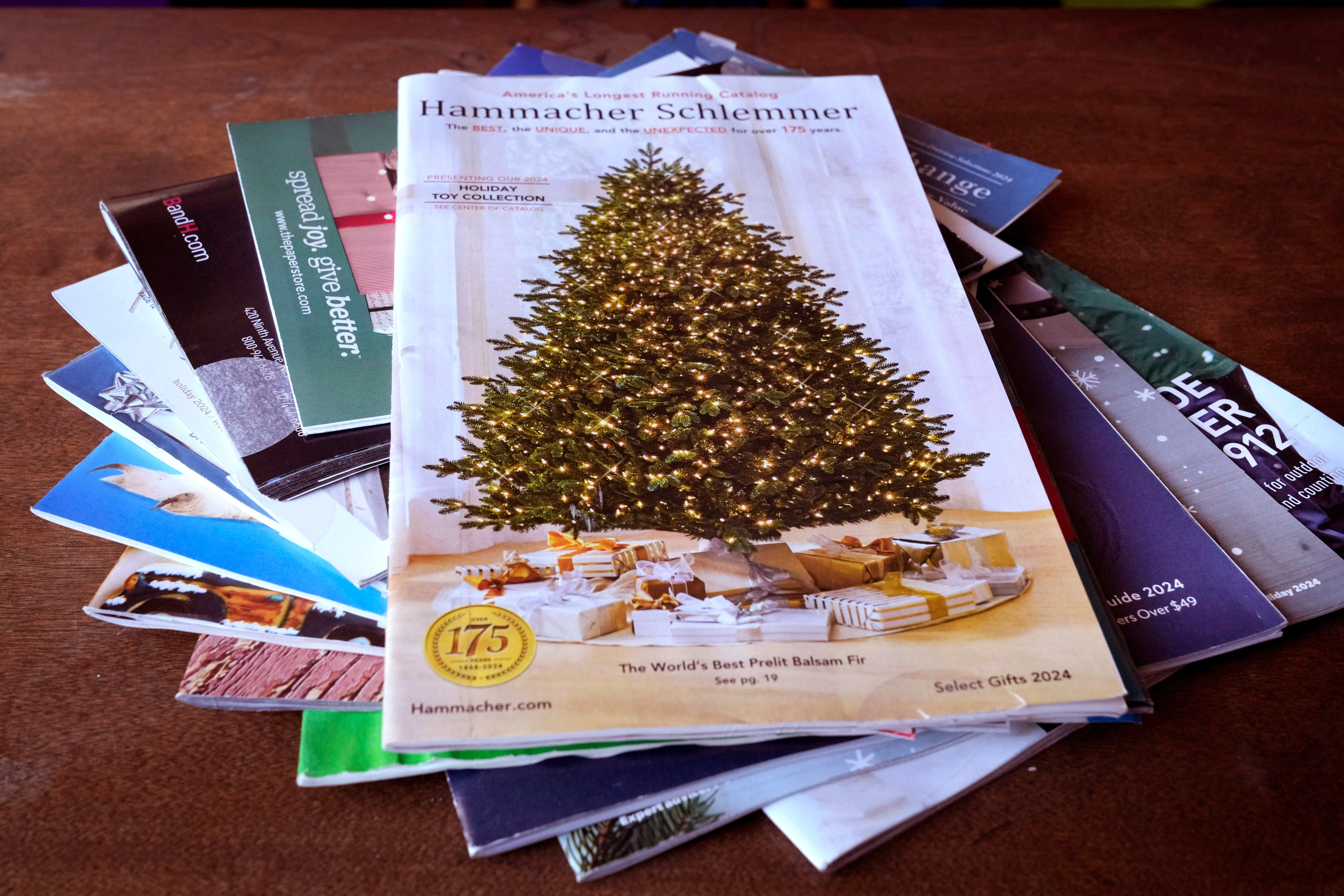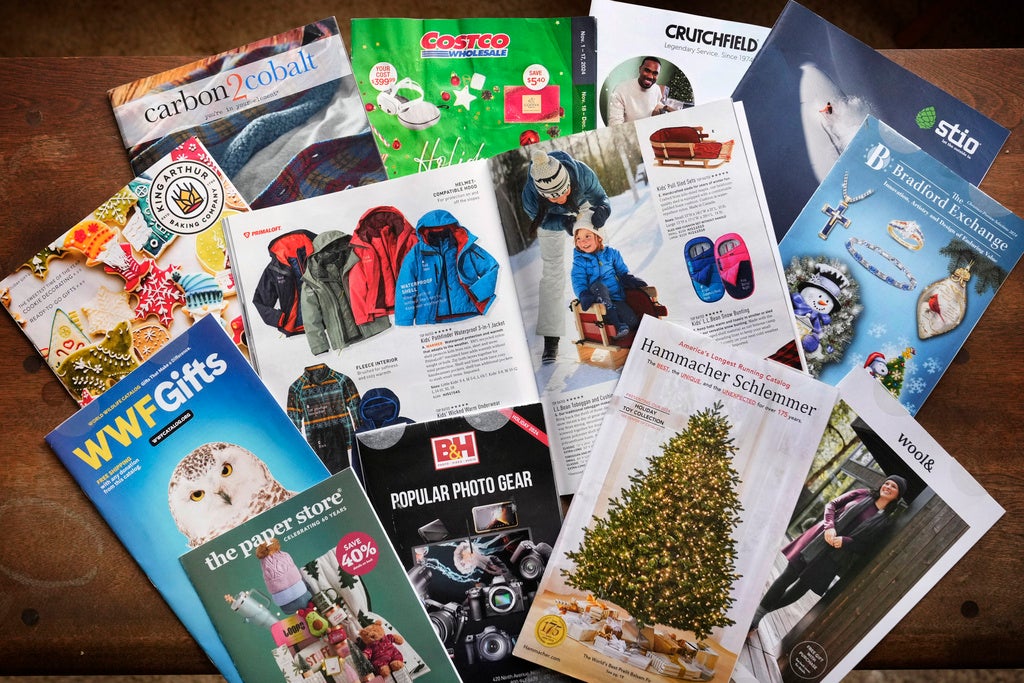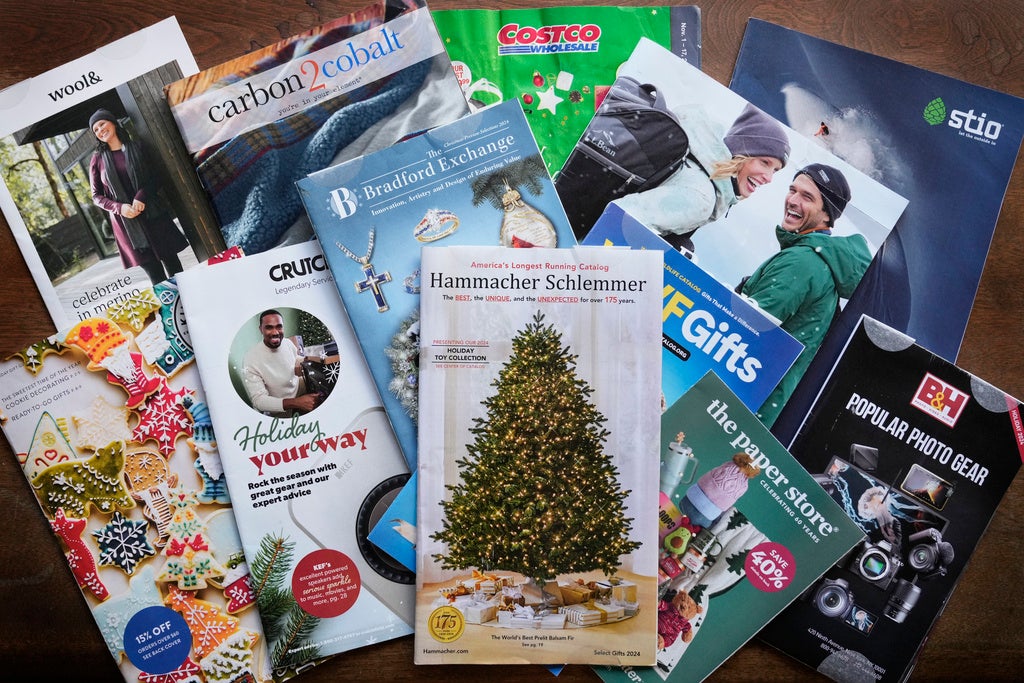The reason your favorite holiday catalogs are smaller this year
While retailers hope to go big this holiday season, customers may notice that the catalogs arriving in their mailboxes are smaller

Honey, they shrunk the catalogs.
While retailers hope to go big this holiday season, customers may notice that the printed gift guides arriving in their mailboxes are smaller.
Many of the millions of catalogs getting sent to U.S. homes were indeed scaled down to save on postage and paper, resulting in pint-sized editions. Lands’ End, Duluth Trading Company and Hammacher Schlemmer are among gift purveyors using smaller editions. Some retailers are saving even more money with postcards.
Lisa Ayoob, a tech-savvy, online shopper in Portland, Maine, was surprised by the size of a recent catalog she received from outdoor apparel company Carbon2Cobalt.
“It almost felt like it was a pamphlet compared to a catalog,” she said.
Catalogs have undergone a steady recalibration over the years in response to technological changes and consumer behavior. The thick, heavy Sears and J.C. Penney catalogs that brought store displays to American living rooms slimmed down and gave way to targeted mailings once websites could do the same thing. Recent postal rate increases accelerated the latest shift to compact formats.
The number of catalogs mailed each year dropped about 40% between 2006 to 2018, when an estimated 11.5 billion were mailed to homes, according to the trade group formerly known as the American Catalog Mailers Association. In a sign of the times, the group based in Washington rebranded itself in May as the American Commerce Marketing Association, reflecting a broadened focus.

But don't expect catalogs to go the way of dinosaurs yet. Defying predictions of doom, they have managed to remain relevant in the e-commerce era. Retail companies found that could treat catalogs with fewer pages as a marketing tool and include QR and promo codes to entice customers to browse online and complete a purchase.
Despite no longer carrying an extended inventory of goods, catalogs are costly to produce and ship. But they hold their own in value because of growing digital advertising costs, helping retailers cut through the noise for consumers barraged by multi-format advertisements, industry officials say.
In an unlikely twist, notable e-commerce companies like Amazon and home goods supplier Wayfair started distributing catalogs in recent years. Amazon began mailing a toy catalog in 2018. That was the same year Sears, which produced an annual Christmas Wish Book Wish starting in 1933, filed for bankruptcy.
Fans of printed information may rejoice to hear that apparel retailer J.Crew relaunched its glossy catalog this year.
Research shows that the hands-on experience of thumbing through a catalog leaves a greater impression on consumers, said Jonathan Zhang, a professor of marketing at Colorado State University.

“The reason why these paper formats are so effective is that our human brains haven’t evolved as fast as technology and computers over the past 10 to 20 years. We retain more information when we read something on paper. That's why paper books remain relevant," Zhang said. “The psychology shows that three-dimensional, tactile experiences are more memorable.”
Pint-sized presentations still can work, though, because the purpose of catalogs these days is simply to get customers’ attention, Zhang said. Conserving paper also works better with younger consumers who are worried about the holiday shopping season's impact on the planet, he said.
Postal increases are hastening changes. The latest round of postage hikes in July included the category with the 8.5-by-11-inch size that used to be ubiquitous for the catalog industry.
Many retailers responded by reducing the size of catalogs, putting them in a lower-cost letter category, said Paul Miller, executive vice president and managing director of the American Commerce Marketing Association. One size, called a “slim jim,” measures 10.5 by 5.5 inches. But there other sizes. Some retailers have further reduced costs by mailing large postcards to consumers.
Lands' End, for one, is testing new compact formats to supplement its traditional catalogs. This year, that included folded glossy brochures and postcards, along with other formats, Chief Transformation Officer Angie Rieger said.
Maine resident Ayoob said she understands why retailers still use catalogs even though she no longer is a fan of the format. These days, she prefers to browse for products on the internet, not by flipping through paper pages.
“Everybody wants eyeballs. There’s so much out there -- so many websites, so many brands,” said Ayoob, who spent 35 years working in department stores and in the wholesale industry.
Targeting customers at home is not a new concept. L.L. Bean was a pioneer of the mail-order catalog after its founder promoted his famous “Maine Hunting Shoe” to hunting license holders from out-of-state in 1912. The outdoor clothing and equipment company based in Freeport, Maine, is sticking to mailing out regular-sized catalogs for now.
“By showcasing our icons, the catalog became an icon itself,” L.L. Bean spokesperson Amanda Hannah said. "Even as we invest more in our digital and brand marketing channels, the catalog retains a strong association with our brand, and is therefore an important part of our omni-channel strategy, especially for our loyal customers.”